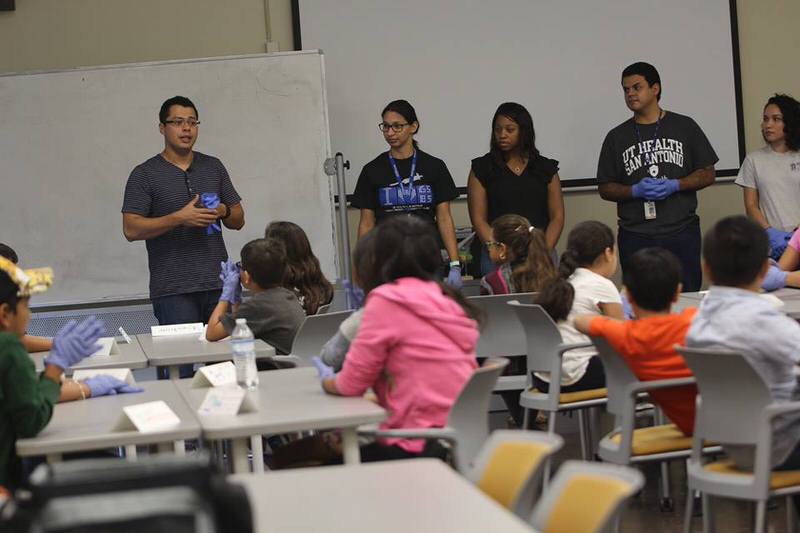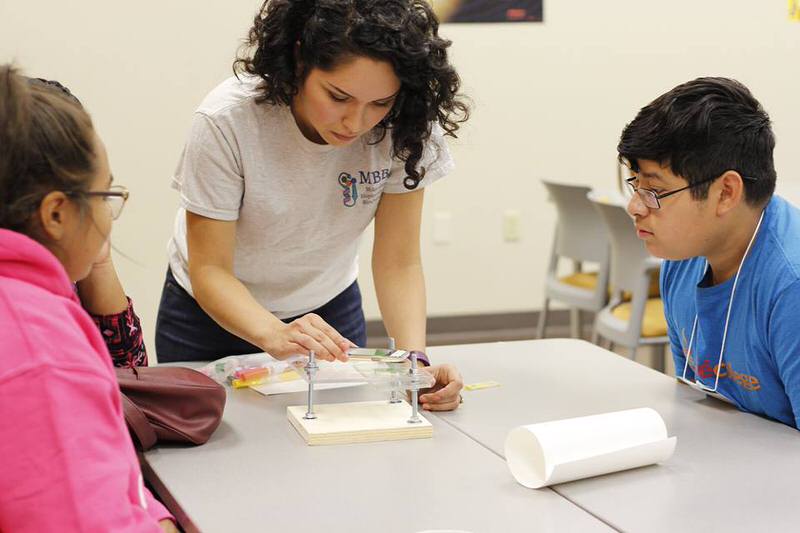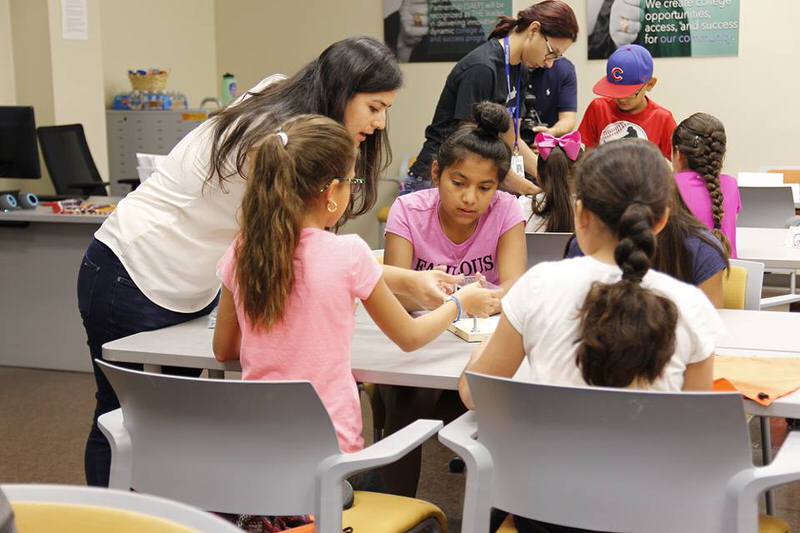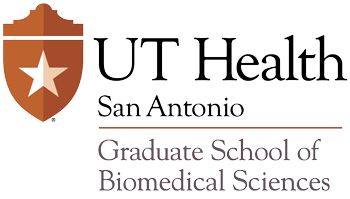Homemade Microscopes and Glowing Germs at Cafe College
 A group of graduate students from the Initiative on Maximizing Student Development (IMSD) program volunteered on July 25 with the Cafe College STEM Camp.
A group of graduate students from the Initiative on Maximizing Student Development (IMSD) program volunteered on July 25 with the Cafe College STEM Camp.
The IMSD program is a National Institute of Health student development program to increase the number of students from underrepresented groups in biomedical research at research-intensive environments. The program is led by Dr. Nicquet Blake at the Graduate School of Biomedical Sciences at UT Health San Antonio.
The students were led by biochemistry graduate student Frank Herkules who helped plan the experiments and coordinate the outreach event with CafA© College.
Cafe College is a resource center created by the city of San Antonio and the San Antonio Education Partnership to assist students in pursuing higher education goals.
Herkules noticed that the students had a wide range of scientific experiences.
“Some kids had more teaching where they could tell you what DNA stands for and others that have had their science teachers quit halfway through the year. I see this as an opportunity to expand the interest of those that are inclined to science in general and for those who have not had as much science available to make them seek it out if they discover that they enjoy it.”
While at Cafe College, the students did two experiments. The first was an experiment to help teach kids about the transmission of infectious bacteria and viruses.
 “The kids learned about how quickly germs were spread by shaking hands and passing “bacteria” in the form of glow paint (Glo Germ). Using a glo germ power, they also learned the effectivementss of cleaning their desks by trying to remove the powder with paper towels and using a UV light to see the spots they missed,” said biochemistry graduate student Crystal Khan.
“The kids learned about how quickly germs were spread by shaking hands and passing “bacteria” in the form of glow paint (Glo Germ). Using a glo germ power, they also learned the effectivementss of cleaning their desks by trying to remove the powder with paper towels and using a UV light to see the spots they missed,” said biochemistry graduate student Crystal Khan.
Frank Herkules explained that the experiment help teach students about the effectiveness of cleaning our hands after being exposed to others that may be sick and washing our hands/surfaces as a preventative measure to keeps ourselves healthy.
The second experiment taught students how to make a homemade microscope using plywood, plexiglass, and a phone. The kids assembled the microscope and visualized prepared slides of insect anatomies, plant components, and tissue samples using a cell phone.
“We tried to analyze the samples we viewed and tried to speculate why they looked the way they did,” she explained. “They learned a little bit of model building, troubleshooting, and that magnification is a result of focusing light.”
 Quintero explained that her favorite part of volunteering was connecting with the kids.
Quintero explained that her favorite part of volunteering was connecting with the kids.
“A student asked if I spoke Spanish and then proceeded to ask several things about the microscope, my work, where I came from, and if my parents spoke Spanish,” she said. “I was glad to provide the information they needed and remind them that scientists come from all kinds of places and families just like their own.”
Khan believes that it is important for students to be involved in science outreach events such as these to help educate the public about science.
“Lots of people and kids don’t know what scientific research is. People are very curious about scientists and what we do. It’s important that we put faces to science. In addition graduate students need to reconnect with their past selves and remember what it was like to feel that drive for learning when everything was new. It’s easy to get stuck in a rut when your experiments aren’t working. Seeing these kids get excited about learning gives me a boost of energy when I get back to the lab.”
Herkules enjoyed volunteering because he believes it is an opportunity to pique children’s curiosity and, he hopes some will pursue science as a career.
“It is important to me because I feel that it is a privilege to be in a space where the community has provided a place where I can do what I want here in San Antonio, he said. “Doing outreach events like this is a small way that I can contribute back to the San Antonio community.”
